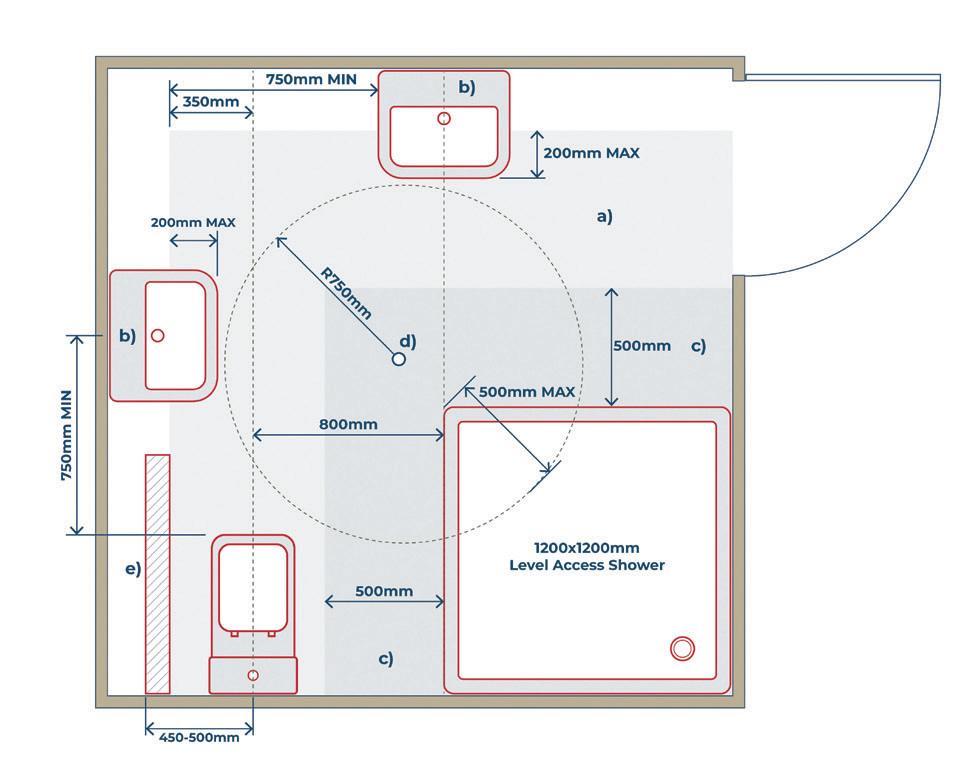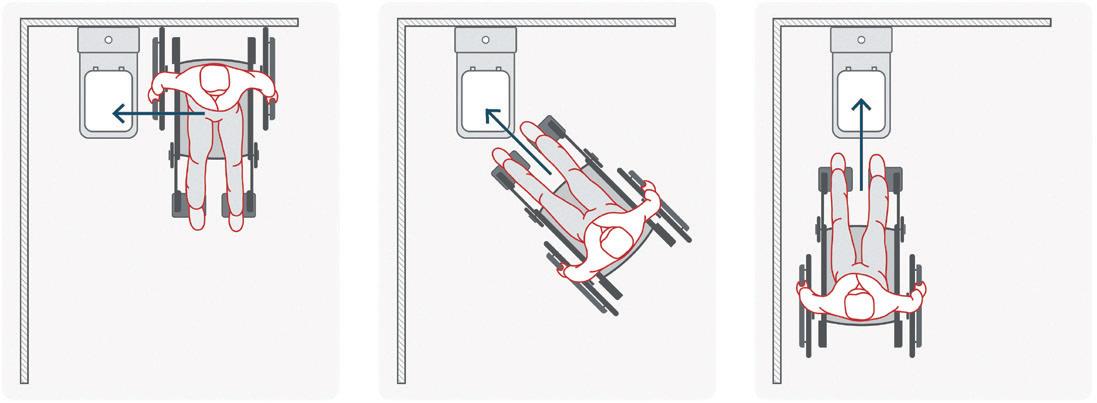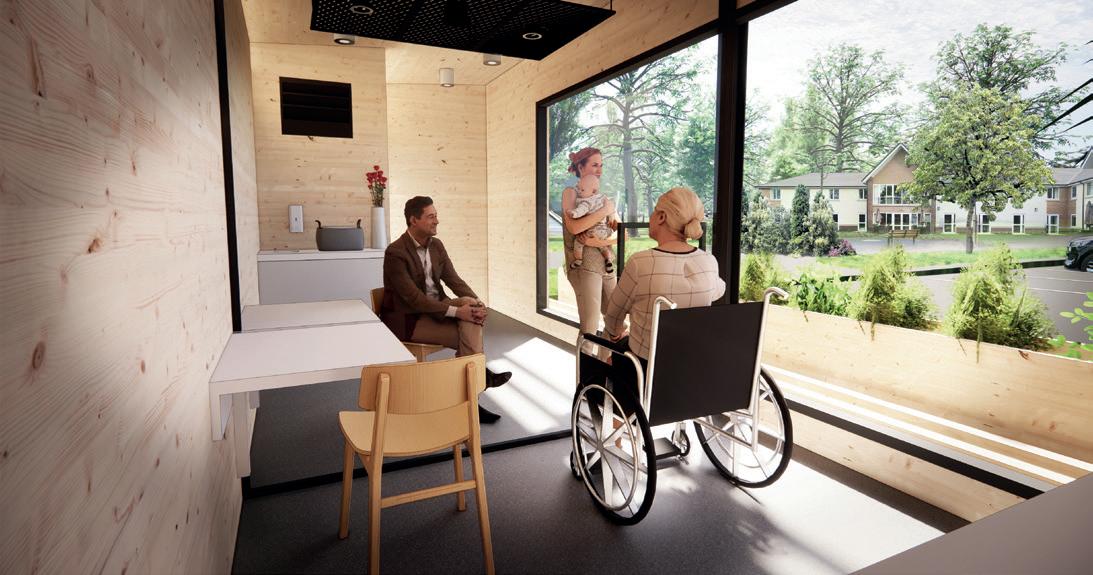
4 minute read
DISABILITY
INCREASING DEMAND FOR INCLUSIVE BATHROOMS
This has been an unprecedented year on many levels, what with construction sites having to implement social distancing measures and four in 10 architects reportedly struggling with their mental health during lockdown . The industry has been battling to keep sites open and building work progressing, and the UK’s 2020 outlook now sits between a contraction of 5 to 12%, with the bounce back in 2021 forecast to be between 1 and 10%.
Advertisement
AKW
A g e i n g p o p u l a t i o n = inclusive home demand
Following the significant site construction and operational disruption of COVID-19, Knight Frank’s research consultancy team has predicted that the total delivery of new homes in the UK will drop by 35% in 2020. In the longer term, consumer sentiment will also impact recovery, and house-builders will, not surprisingly, only build what they can sell. One thing that won’t change; however, is the UK’s rapidly ageing population and with it an increasing demand for inclusive, accessible public and private housing.
To ensure that more new homes meet minimum accessibility standards will take time, but with 1.2 million wheelchair users in the UK already, it is an area of housing design that sorely needs attention. Here, Stuart Reynolds, Head of Product and Marketing at AKW, explains how housebuilders and developers can bring good design to bear, in cost-effective ways, for those needing wheelchair accessible bathrooms. More detailed advice can be found in the new AKW Wheelchair Guide for Accessible Bathrooms.
Good wheelchair accessible bathroom design
What exactly constitutes ‘good’ wheelchair accessible bathroom design? The following is best practice advice taken from the Building Regulation’s Doc M for wheelchair user dwellings and also from Kate Sheehan, Occupational Therapist of The OT Service, for a well-designed wheelchair accessible bathroom:
Promote movement around the space
Manoeuvring into and inside the bathroom are key considerations, not only when thinking about the wheelchair user but any personal care assistants that might accompany them. With this in mind:
Prioritise level access throughout the space – use a wetroom former, or a recessed or ramped shower tray
Ensure doors are outward-facing – this increases space in the bathroom and helps in case of emergencies
Ensure easy and safe level shower access – this can be done by using a corner design for the shower space
Minimise any gradient near the WC – a level access shower area has a gradient to help the water drain. Ensure that this is not part of the WC transfer zone, to minimise wheelchair tipping hazards.
Incorporate a raised height toilet – to allow for easier transfer from a wheelchair to a toilet seat
Ensure toilet accessibility on both sides, if possible – this is best-practice advice and facilitates transfers, personal assistant support and potential changes in need for the wheelchair user
Ensure that there is no external plumbing and pipework – to promote ease of movement around the space, all pipework needs to be concealed within the walls
Think about the placement of radiators or towel rails – these can hinder wheelchair movement. Always opt for low-surface temperature heat sources and consider underfloor heating as an alternative.
Use slip-resistant flooring – to maximise the traction of the wheelchair and minimise falls
Use a wall-hung sink – to improve access. Consider one with handles or a concave design to make things easier for a wheelchair user. The sink’s height should also be tailored to the user’s requirements (although compromises might be needed if the space is also used by the wider family).
KEY: The aim of any accessible bathroom is to promote the dignity of the user. If they are also able to use the space independently, then these are key elements to include:
Think about shower placement – as this will impact movement around the space. For example, fittings can encroach up to 500mm on one side of the space (not both).
Use technology to promote independence – for example, AKW’s SmartCare Plus remote-controlled shower helps the wheelchair user control everything with no additional assistance
Think about the user’s reach – to ensure that all of the essential fixtures and fittings (such as the toilet flush, light switches and bath/shower controls) are at a height and reach that supports functional use Two sites: A: WC access zone

B: Alternative permitted locations for a wash hand basin (in a bathroom) or a hand rinse basin (in a WC)
C: Fittings can encroach up to 500mm one side or the other (not both)
D: 1500mm diameter clear turning circle – may overlap max 500mm with shower
E: Hatched area shows 1000mm-long x 1000mm-high x 100mm-wide zone
Good design promotes independence
kept for fitting of grab rails.

Add a handle or rail to the door – to help the wheelchair user close the door behind them, without the need for additional assistance
Tailor the placement of grab rails – to suit the abilities of the wheelchair user. Think about rail placement beside the WC, washbasin and level access shower.
Depending on the bathroom’s layout, fold-up rails may benefit some users and any personal assistants
Incorporating a bidet – bidets promote user independence. If this is something that the wheelchair user would benefit from, remember to include an isolated electrical supply in compliance with Building Regulations for this.
Good design needn’t be expensive. In fact, the majority of the suggestions in AKW’s latest Wheelchair Accessible Bathroom Design guide are focused on using cost-effective adaptation equipment in ways that make sense to the space and the wheelchair user.
For more details on how to ensure the best possible wheelchair accessible bathroom design, download the new Wheelchair Guide for Accessible Bathrooms (www.akw-ltd.co.uk/ wheelchairbathroomguide).










